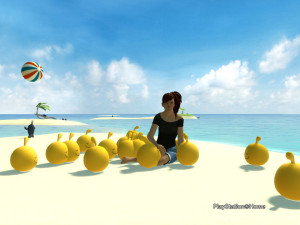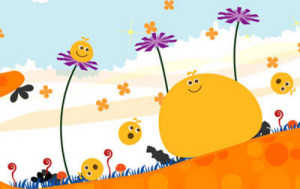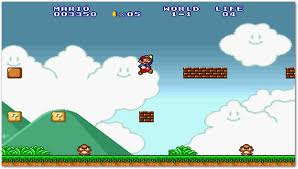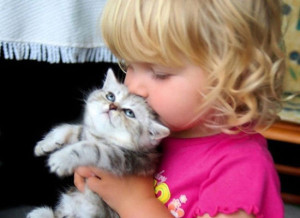Learning: Home, Gaming and Young Children
by CheekyGuy, HSM team writer
Imagine sitting down with your youngest kid to play on Home, as you explore colorful, candy cotton worlds full of little creatures and cute animals in farms, playing games together that could easily stimulate your child in a fun way as he or she learns.
I bet you are not thinking of that right at this moment, since PlayStation Home is currently aimed at the younger teens to adult age groups, as they compete for the highest strike record in the bowling alley, become young wizards exploring Pottermore or blast aliens in Novus Prime. Home is not the right place for young children, you might think. But you couldn’t be more wrong, because Home could — if rigorously controlled and monitored — be of benefit to a much younger audience.
Why? Because learning and exploring have become almost synonymous with virtual worlds. And you’re always going to be discovering new things every time you log onto PlayStation Home. Today’s consoles are perfectly designed for this kind of gaming. These days, it’s about developers bringing more scale and depth to their games, a craft practiced and perfected within gaming’s 30-year reign right up to this present point in time.
Home is about being able to play and learn something new about the gaming world around you, and then a little about yourself in the process. How do you play? How do you approach a certain task and then execute it? In games such as Far Cry 3, How do you react to a certain situation? As gaming evolves to the point in which the player will begin to feel in what his or her character is going through, I am seeing a new generation of gaming. Survival Horror has become the start of this process.
Just like we do out in the real world.
In the early days of gaming it was very much a question of anticipation, timing, as well as luck. It started with judging a square dot on a screen in Pong, and then years afterward, timing a dangerous jump over a chasm in Shigeru Myamoto’s Super Mario games.
Most of this ethos in gaming has survived in modern gaming today, coupled with a few more new nuances: your reaction to the quest, the problem at hand, the emotion that you feel in any situation presented to you, that causes your actions, and any form of empathy you feel toward a specific character. This is exactly the process an actor goes through during the reading, and then the acting out of a theatre or movie script. Actors ask a lot of questions as to who their characters are and of their motives in the story. Players today go through a very similar process when playing the games of today.
In the early days of arcade gaming, there wasn’t this amount of a deeper level of thinking when playing a hit Triple A rated game. It was the very same level of gameplay we now find in today’s current trend in mobile gaming on the fly, the Angry Birds, Bejeweled era of gameplay. It can’t involve you too much, otherwise you would easily miss your bus or train ride home.
As characters are now convincingly real and lifelike, they have endless layers of backgrounds, flaws and quirks, just like real people do, qualities that build up into making them the living, breathing, believable people that you meet in grand gaming worlds of epic utopian, or perhaps, dystopian design.

The Mui Mui — cute, non-threatening creatures that could be Sony’s mascot representing early learning gaming and appeal to children everywhere
But going back to the drawing board at hand — to create a land, or a world which your average Teeter totter can understand, is another matter altogether for Playstation Home. Artists, designers and coders would have to fully flesh out a world of which is friendly and non-threatening to the average three to six year old.
The Mui Mui are just perfect examples of a small horde of benign looking creatures that follow you, entertain, sing and dance with you, while you learn as much about them as they do about you. A creature you can interact and explore with as you learn about the world around you together. They also should react to how you play with them.
Kids love animals, perhaps more than the grown ups around them. They are deeply fascinated by them, the sounds they make, the texture of their fur. Young children build empathy with the animal they are with, and indeed with any animal they come across. They can build a bond with that animal, much closer than with any human being. Sick children in hospitals or at home are found to recover much faster if they are spending time with an animal presented to them or their own pet.
There could be games that take advantage of the Playstation’s Sixaxis DualShock Pad’s primary four buttons, as young children even at pre-school age already understand shapes and primary colors. They could learn to match the color and shapes printed on the four primary buttons. Games could involve mixing and matching of the shapes of colours, or hitting a button to mimic the response of animal sounds or voices. Games could also encourage an interaction with other kids in cooperative play, which could play an important part of their growing and overall emotional stability as they grow older. Younger children seem to like anything associated with colors, textures and shapes, and the PS3 has the power to simulate this for them on-screen.
Games such as Little Big Planet are another example of a game that could appeal to younger children, maybe not so much as a platformer, but because of the similarity to the Super Mario franchise in that here is a friendly protagonist caught up in a dangerous world, yet it is a user friendly, colorful, inviting world which you can explore and have fun in.
He or she can explore the underwater depths of an ocean and using voice narration, name the fish that they can see in primary terms (Clown fish, Squid, Shark etc.) in user friendly, cartoonish images, almost caricatures of the real life counterparts of the creatures they see. Or you could explore a farm or Zoo together.
One of our resident writers at HSM (Burbie) did a fantastic article on an interactive educational game in Japan Home, where the player can explore an underwater sea bed and its marine inhabitants. And this can be a good example of a game that Sony, or any other third party developer, could create for an early learning game, or indeed a game that people of all ages can play.
It is important to have an open dialogue between a parent and their child even while playing all types of games. Whether physically away from the console (e.g. traditional board games and toys) or the new world of electronic gaming. So, for Home to have, say, a separate area where a parent and child could safely navigate could very well have new and extra benefits as far as a new target audience is concerned, perhaps for this Generation of Playstation Home, or the next generation on the PS4.
Perhaps a new peripheral, such as a soft plush cushioned console pad (minus the control sticks, just the buttons) could work in timed response and explore games to be featured in the next iteration of games for very young children, for instance exploring an early learning centre on a Playstation system.
There are so many possibilities for games aimed at pre-schoolers and younger children playing together with their parents and bonding with them in the game world.
And why not?
Share
| Tweet |






I find the idea that Home management taking on the responsibility to rigorously monitor and control Home for an audience below the age of 13 to be quite amusing considering their current standard is to leave the monitoring up to the community itself by asking them to report, block and ignore. I do appreciate that you can actually see Home being on the PS4 which is optimism that hasn’t been shared by other articles in the recent past on HSM. If I did have children I would be the type of parent to monitor what my children were playing and would block usage of Home until they were in their teens because of the things that I myself have seen. I got my first console when I was 7, my older brother gave me an Atari 2600 which my parents would never have spent the money on and I played that thing constantly unless I was allowed to play games at the arcade while supervised. Today’s game developers are looking for the largest market to appeal to and young children just aren’t where the money is at. Wonderbook however is pretty good for children, I’ve actually played that with my nephew and niece as well as a few Kinect games. But a virtual world or a social mmo is the last place I would introduce them to until they were at least old enough to really understand the dangers that they could come across on their own.
…
I am a new first time grandmother right now and I am concerned because my 2 1/2 yr old granddaughter is outrageously EXTREMELY computer mobile phone gaming literate!!!
There is so much I could say right now… but all I’m going to say is…what a beautiful article Cheeky!!! Beautiful, beautiful, beautiful!!!
A lot of social MMOs have measures in place so kids dont get issues or just wouldn’t be enjoyable for kids, if a kid can get round the age restrictions the first games they will be playing is black ops or GTA
I think that Home could have a lot of benefits for younger kids as well. I have friends who let their 7 year old come into Home with strict supervision. She goes to only Mui Mui island and the Loco Roco spaces and loves them immensely. The new Spunland space in EU seems to be very childlike from what I have heard as is the Yeck space we got here.
Educational games and spaces could be easily integrated into Home, as shown by the aquarium I wrote about in Japan Home, but in order for Sony to allow toddlers in, there would have to be a totally different set of heavily password guarded areas and I am afraid that they will never do it.
The idea is a sound one, children learn in a whole new way since the onset of videos and gaming and I wish there was a way to implement this into Home.
Great article Cheeks.
I think the concept of a somewhat separate HOME for younger audiences is possible. HOME could have settings for users under a certain age that include: vague, fantasy or completely gender neutral avatars similar to the WII avatars and the removal of ‘shopping’. These settings might help deter older users trying to pose as children. Chat could be further restricted or reduced to the use of predesignated phrases to also prevent older users from ‘trolling’.
Even without a shopping function, creating rewards tied to children’s games is an easy way for Sony to create exposure, and help market games for different devices, especially Vita and mobile devices.
Were there a way for children to only have access to private spaces if a parent signs them up is a nice thought in my opinion. Whether this is feasible I do not know.
Bramblenook Farm is I believe a good space for younger children to play in.